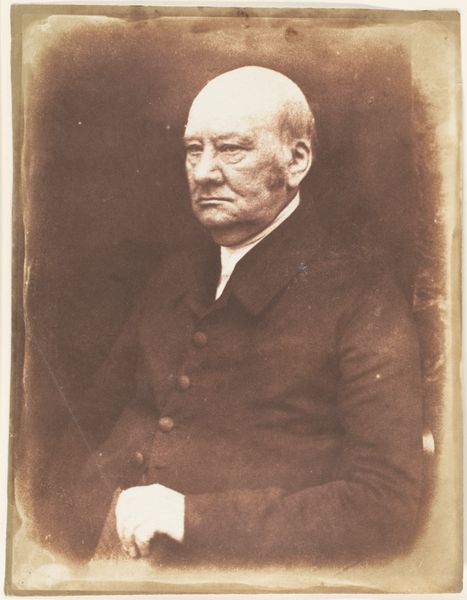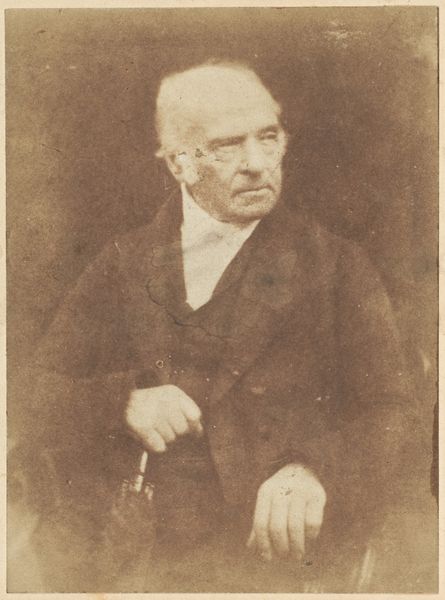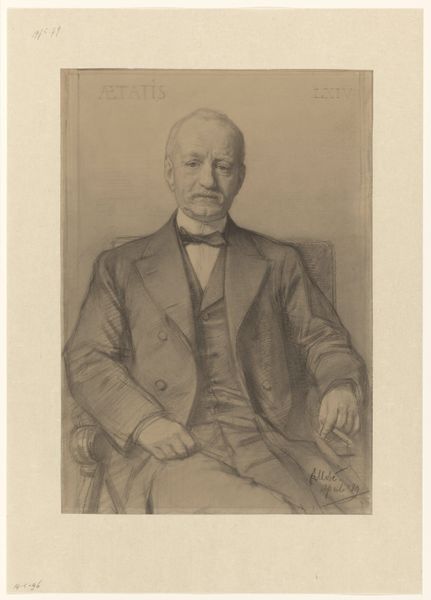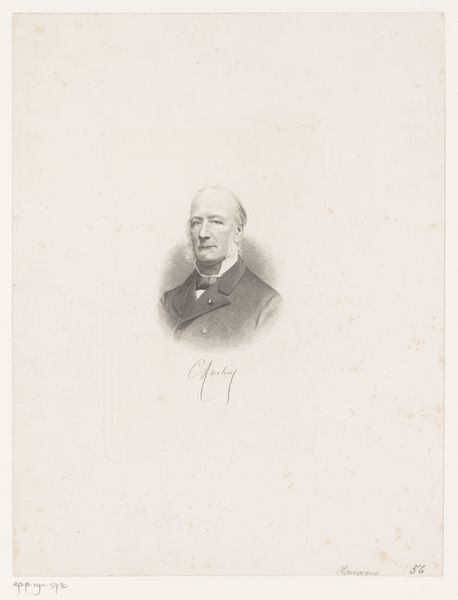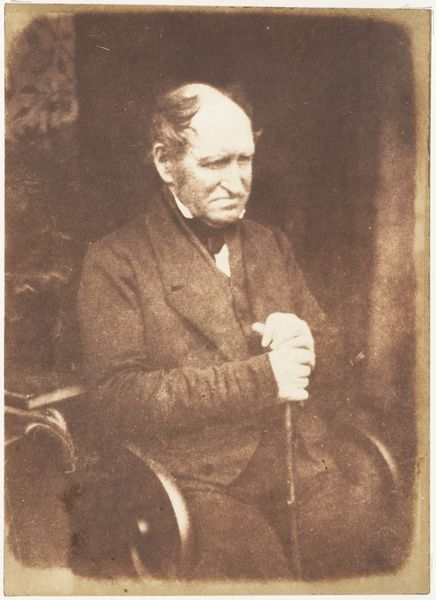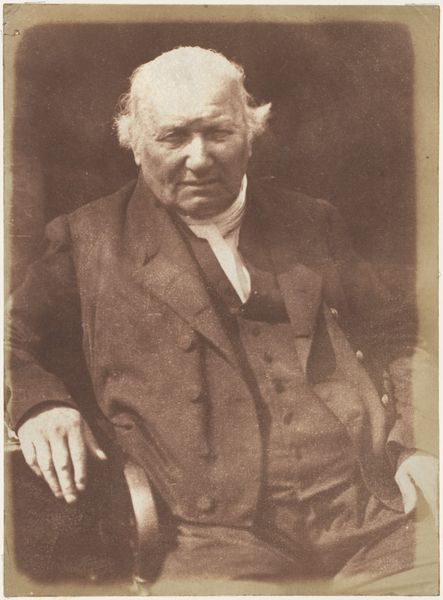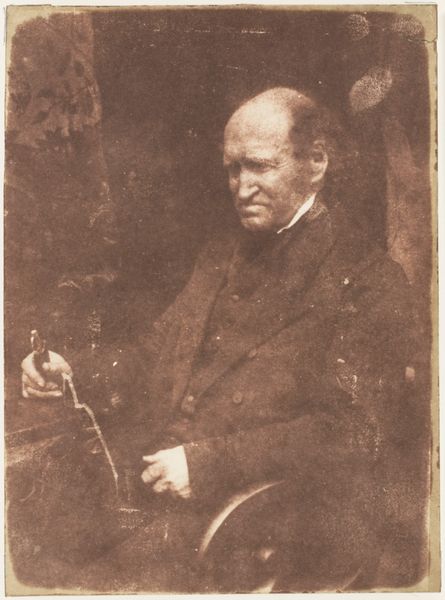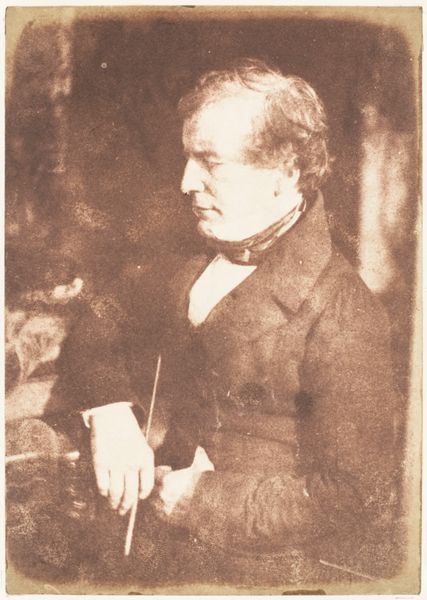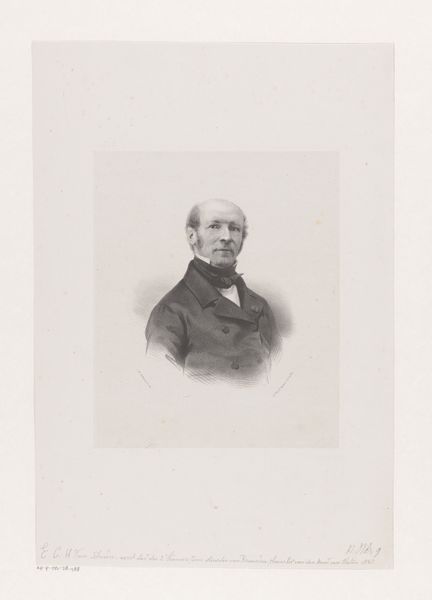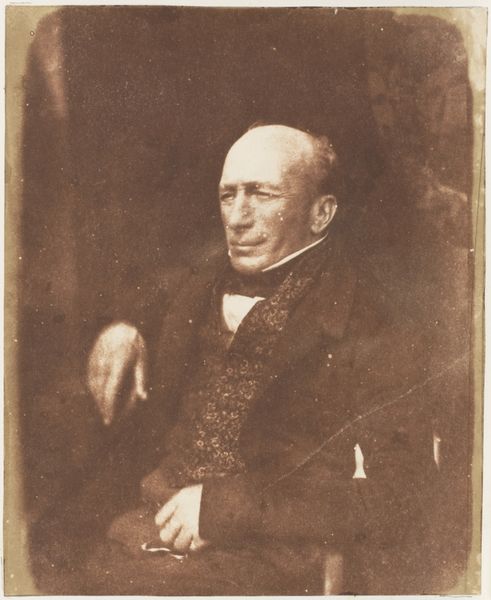
daguerreotype, photography
#
portrait
#
daguerreotype
#
photography
#
romanticism
#
men
Copyright: Public Domain
This photograph of Dr. Jabez Bunting was made using the calotype process developed in the 1840s in Scotland by Hill and Adamson. The image, with its soft focus and limited tonal range, evokes the solemnity and authority associated with prominent figures of the era. Bunting, a leading Methodist minister in England, was a significant figure in shaping the institutional structure of the Wesleyan Methodist Church. The photograph, taken relatively early in the history of photography, reflects the social and cultural values of Victorian England, where religion played a central role in shaping public life and moral discourse. The portrait captures Bunting in a composed, dignified pose, holding a book, symbolizing knowledge and spiritual wisdom, and the image underlines his status within the Methodist community and wider society. To understand the photograph fully, historians often consult period documents, religious publications, and social commentaries to understand the complex interplay between religious belief, social class, and the emerging medium of photography. The study of art is always contingent on social and institutional contexts.
Comments
No comments
Be the first to comment and join the conversation on the ultimate creative platform.

